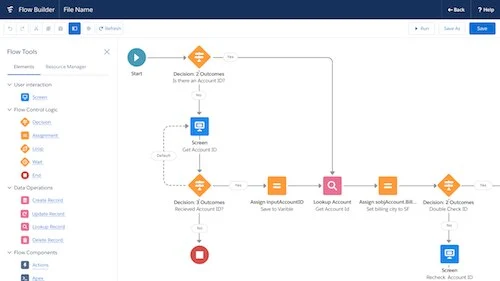In the dynamic landscape of today’s digital world, where data reigns supreme, safeguarding your precious information is not just a good practice; it’s a necessity. This in-depth article dives into the critical realm of data and metadata backups, exploring how you can harness their full potential to ensure the safety, continuity, and optimization of your business processes. So, buckle up as we embark on this enlightening journey to unlock the true power of data and metadata backups.
Understanding Data and Metadata: The Foundation of Insights
Before we delve into the intricacies of leveraging backups, let’s establish a solid foundation by understanding the two pillars: data and metadata. Data constitutes the raw information, the numbers, texts, and files that fuel your operations. Metadata, on the other hand, adds context, defining and describing your data, essentially providing the “what,” “when,” and “how” of your information.
The Crucial Role of Backups
Imagine a scenario where your critical data suddenly vanishes due to a cyberattack, hardware failure, or human error. A nightmare, right? This is where backups step in as the ultimate saviors. Backups are copies of your data and metadata, captured at specific points in time, serving as a safety net against unforeseen disasters.
The Power of Comprehensive Backups
1. Safeguarding Against Loss
Data loss can lead to irreversible setbacks for your business. By regularly backing up your data and metadata, you create a fail-safe mechanism. In case of an unfortunate event, you can easily restore the most recent version of your information, minimizing downtime and potential losses.
2. Ensuring Business Continuity
Business disruptions can be costly. With meticulous backups, you guarantee seamless continuity. Even if your primary data repository faces a catastrophic failure, your backups enable you to swiftly recover and resume operations.
Leveraging Metadata Backups for Enhanced Insights
1. Enhancing Decision-making
Metadata provides the context that transforms raw data into actionable insights. By preserving metadata through backups, you maintain the contextual fabric required for informed decision-making. This ensures that your analytics and strategies remain accurate and effective.
2. Regulatory Compliance
In an era of stringent data regulations, metadata holds the key to compliance. Backing up metadata ensures you have a historical record of data handling, proving your adherence to regulations and potentially saving you from legal troubles.
Best Practices for Optimal Backup Utilization
1. Regularity and Consistency
Perform backups religiously. Consistency is key to ensuring that your backups are up to date and capable of safeguarding your latest data and metadata changes effectively.
2. Tiered Backup Strategy
Implement a tiered approach to backups. Differentiate between critical and non-critical data, creating backup frequency tiers based on the significance of the information. This optimizes storage and recovery efficiency.
3. Automated Backup Solutions
Manual backups are error-prone and time-consuming. Embrace automated backup solutions to streamline the process and ensure that backups are executed without fail.
Incorporating Backups into Your Workflow
1. Integration with Workflows
Backups should seamlessly integrate with your existing workflows. Incorporate them into your data management systems and processes, making recovery as simple as a few clicks.
2. Regular Testing and Restoration
Perform periodic tests of your backup systems. Simulate recovery scenarios to verify the effectiveness of your backups. This proactive approach ensures that you’re always prepared.
Conclusion: Embrace the Backup Revolution
In the digital age, where data rules and information drives innovation, leveraging the potential of your data and metadata backups is non-negotiable. They are the guardians of your business’s continuity, compliance, and progress. So, take the lessons from this overview and weave them into your data strategy. Remember, the power to secure your future lies in your hands, and in your backups.





